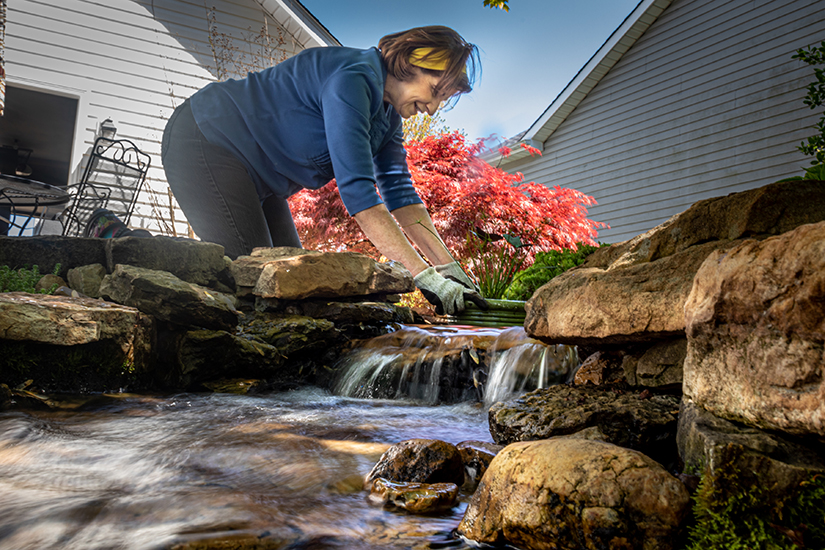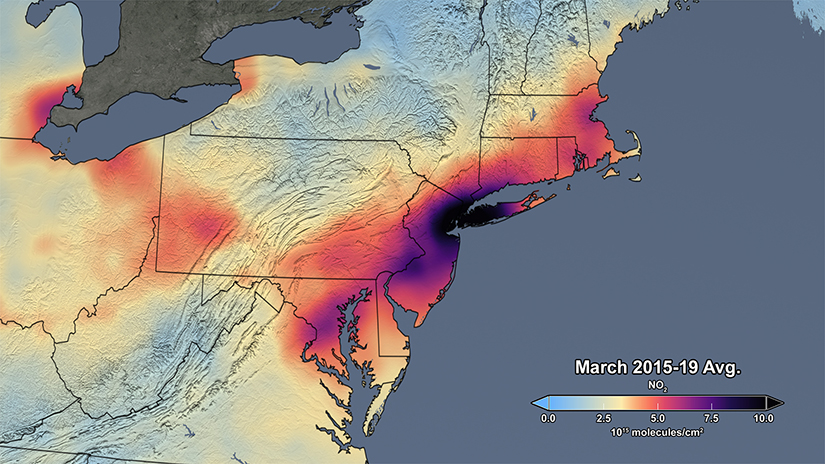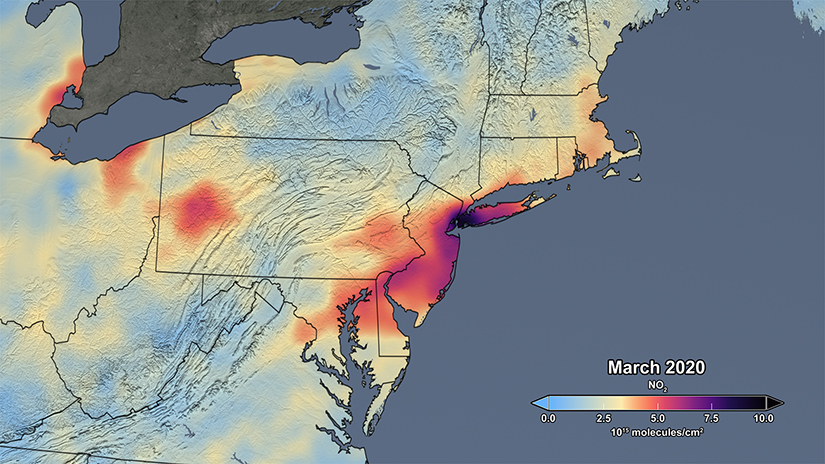In June 2015, Pope Francis released “Laudato Si’: On Care for Our Common Home,” an encyclical calling the Church and the world to acknowledge the urgency of environmental challenges and to join him in embarking on a new path. The encyclical was dated May 25.
St. Louis Catholics have helped carve that path.
Jamie Hasemeier has been an environmental activist since before 2010. When her children began school, she helped them create a green club and continue the environmental stewardship that they did at home, with no or little waste for lunches and events and being conscious of energy usage.
“To have this encyclical come along in 2015 validated the efforts,” Hasemeier said. “The voice coming from Pope Francis was so crystal clear — when we take care of the earth we are taking care of each other and one of the most important messages from Jesus is to take care of the poor. Climate change is going to be fine for a lot of First World people and wealthy people because they’re going to be able to adapt more easily than our brothers and sisters who are the least among us who are going to bear the brunt of stronger storms, heavier rains, droughts” and more.
There’s not much time before reaching “the point of no return” for the planet, Hasemeier said. “I feel tremendous pressure to pull as many people in to do what we can to preserve and conserve.”
A guidebook
The Hasemeiers moved to Webster Groves from Chicago in 2013 and came to Holy Redeemer Parish where they started a green club with the school community’s full support. “They’ve been so open to so many ideas to honor the earth,” she said. “And it’s so great to have ‘Laudato Si” as a guidebook.”
 Pam Brown tended her garden at her home in St. Charles on April 30. As an environmentalist, Brown does not use pesticides in her garden, “I take care of weeds the old fashioned way, I pull them,” she said.Photo Credits: Lisa JohnstonThe issue of care for the earth is politicized, “but when you look at it through a Christian lens, it really gets to the heart of why we want to take care of the earth and why we want to take care of one another,” Hasemeier said.
Pam Brown tended her garden at her home in St. Charles on April 30. As an environmentalist, Brown does not use pesticides in her garden, “I take care of weeds the old fashioned way, I pull them,” she said.Photo Credits: Lisa JohnstonThe issue of care for the earth is politicized, “but when you look at it through a Christian lens, it really gets to the heart of why we want to take care of the earth and why we want to take care of one another,” Hasemeier said.
She urges further action within the Catholic Church to “take the next step along the process of caring for creation, wherever that step may be.”
The parish began its Our Common Home ministry to identify action steps. They began to bridge the work of the students to the facilities of the whole parish campus. That included changes such as funeral lunches and fish fries which produce low to no waste.
“For the most part everyone wants to do the right thing, and it’s super inspiring and gives me a lot of hope for the future,” Hasemeier said of her parish.
It’s hard for individuals to feel as if they’re making a difference, but their actions have a ripple effect, she said. Reducing energy usage, recycling or starting a garden helps people be a part of the environmental movement and look to actions such as stream cleanups and paying attention to and lobbying elected officials, Hasemeir added.
The encyclical, she said, is an easy read and appeals to the goodness of all people. “I’m so proud the Catholic Church has it. So many faiths look to it. It’s reaching Christians and others across the board. We’re all on this planet together, we’re all in this together.”
Other efforts
Other parishes and schools have similar practices. At St. Cletus School in St. Charles, efforts have included installing two water bottle water fountains to encourage the use of reusable water bottles; no longer using Styrofoam products and plastic utensils; collecting plastic caps which are donated, melted and made into benches; and recycling ink cartridges. The parish has instituted other changes as well.
Following Pope Francis’ call for environmental justice in his encyclical, St. Francis Xavier (College Church) Parish formed a Circle of Creation committee to lead the parish’s efforts to care for all of creation. The group provides information to learn about and act on environmental justice. A presentation by Peter Raven, president emeritus of the Missouri Botanical Garden and an advisor on “Laudato Si’,” was attended by 250 people on Oct. 6, 2019.
In the encyclical, Pope Francis observed: “We were not meant to be inundated by cement, asphalt, glass and metal, and deprived of physical contact with nature.” In the midst of urban St. Louis, a 24-acre native tallgrass prairie at Calvary Cemetery provides the sense of nature that the pope cited. It’s similar to the scene found when explorers first traveled down the Mississippi River. The prairie remnant is land that has likely never seen a plow.
Sister Paulette Zimmerman, SSND, is part of the Intercommunity Ecological Council, with representatives of women religious congregations in the St. Louis area. The council has held several events referring to “Laudato Si’.” Though educational efforts are halted due to the pandemic, it has led people to see what’s important, which is life, Sister Paulette said. “And the skies are getting a rest” from pollution, she said.
Franciscan Sister Cheryl Kemner of Franciscans for Earth in St. Louis cited many other educational efforts that have occurred since the encyclical. It’s hoped that speakers and film series will begin again in the fall. (Visit www.bit.ly/3cd0tZz for updates.)
“Laudato Si’” calls people to see that everything is interconnected and “have an awe and wonder for creation and see that it’s God’s gift to us,” she said.
Conducting energy audits, recycling, composting, buying local farm products, living simply and more are steps the Franciscans have taken along with educating, collaborating and advocating for the environment. With the help of the Franciscan Sisters of Mary, they convinced QuikTrip stores and its waste management firm to recycle its disposable items.
‘It can be done’
The third U.S. National Climate Assessment in 2013 stated that “global climate is changing and this is apparent across the United States in a wide range of observations. The global warming of the past 50 years is primarily due to human activities, predominantly the burning of fossil fuels.”
Jack Fishman, is a professor in Saint Louis University’s Department of Earth and Atmospheric Sciences and director of the Center for Environmental Sciences. The native St. Louisan worked at the NASA Langley Research Center for 31 years. During his career at NASA, Fishman pioneered the use of satellite observations to provide a perspective of the extent of global pollution.
The United States made some strides in decreasing carbon dioxide emissions from 2005 to 2017 though it went up in 2018, he said. “We’re seeing changes, big changes in the use of coal for power, more electric vehicles coming online. It can be done. It would help if there would be a federal policy to reduce emissions, but cities and states and other groups” are making progress.
Energy from solar and wind farms are more affordable, Fishman said. “And so, with the encyclical we have a moral and spiritual obligation to do what we can to save the resources on the planet, which can best be done by decreasing emissions of fossil fuel into the atmosphere.”
Scientists have pointed out that what is happening with COVID-19 may be a harbinger of what will happen with climate change, “particularly the effect on those who are most vulnerable, the poor,” he said. “From Catholic teaching, we know we need to care for the poor and disadvantaged.”
He points also to a belief that 1950 was a turning point in the care for the planet, attributable to consumerism. Pope Francis, in the encyclical, calls it a “throwaway culture.”
Hasemeier, the Holy Redeemer parishioner, sees a need, once the economy opens up again, “to hit the reset button and show a little more respect for the planet.”
As Christians, she said, “we are hopeful people. I don’t think it’s naive or overly optimistic to think we can do this. I have a renewed hope in humanity that we can do something to make a difference and avert some of these climate catastrophes in the future.”
>> Going green
For a parish that wants to go
green, it first needs to make certain it’s being thorough with simple
recycling, in terms of paper, plastic, cans and bottles. Once those
basics are covered, the next step is commercial composting. School
cafeterias and parish events such as fish fries and dinner auctions
generate a huge amount of food waste, better served for commercial
composting than landfills. Specific compostable dinnerware, trays,
cutlery and cups are an environmentally friendly option as opposed to
environmentally unfriendly polystyrene foam containers.
In addition, there are several resources to explore:
• Missouri Botanical Garden www.missouribotanicalgarden.org/sustainability
• Green Dining Alliance www.greendiningalliance.org
• U.S. Green Building Council www.usgbc.org
• St. Louis Composting www.stlcompost.com
For an overview, visit the environment page on the U.S. bishops’ website, www.bit.ly/2YFUIj9.
>> Pollution and COVID-19
NASA satellite data
from April 9 shows a 30 percent drop in air pollution over the
Northeast United States. It’s compared to the average concentration in
March of 2015- Photo Credits: Graphic courtesy NASA’s Scientific Visualization Studio19.
Photo Credits: Graphic courtesy NASA’s Scientific Visualization Studio19.
NASA satellite measurements have revealed
significant reductions in air pollution over the major metropolitan
areas of the Northeast. Similar reductions have been observed in other
regions of the world. These recent improvements in air quality have come
as communities grapple with widespread lockdowns and shelter-in-place
orders as a result of the spread of COVID-19.
Nitrogen dioxide,
primarily emitted from burning fossil fuels for transportation and
electricity generation, can be used as an indicator of changes in human
activity. Average concentrations of atmospheric nitrogen dioxide were
measured.
March 2020 shows the lowest monthly atmospheric nitrogen
dioxide levels of any March during the OMI data record, which spans
2005 to the present. In fact, the data indicate that the nitrogen
dioxide levels in March 2020 are about 30% lower on average across the
region of the I-95 corridor from Washington, D.C. to Boston than when
compared to the March mean of  Photo Credits: Graphic courtesy NASA’s Scientific Visualization Studio2015-19.
Photo Credits: Graphic courtesy NASA’s Scientific Visualization Studio2015-19.
>> Third U.S. National Climate Assessment Key Findings
•
Global climate is changing and this is apparent across the United
States in a wide range of observations. The global warming of the past
50 years is primarily due to human activities, predominantly the burning
of fossil fuels.
• Some extreme weather and climate events have
increased in recent decades, and new and stronger evidence confirms that
some of these increases are related to human activities.
•
Human-induced climate change is projected to continue, and it will
accelerate significantly if global emissions of heat-trapping gases
continue to increase.
• Impacts related to climate change are
already evident in many sectors and are expected to become increasingly
disruptive across the nation throughout this century and beyond.
•
Climate change threatens human health and well-being in many ways,
including through more extreme weather events and wildfire, decreased
air quality, and diseases transmitted by insects, food, and water.
•
Ecosystems and the benefits they provide to society are being affected
by climate change. The capacity of ecosystems to buffer the impacts of
extreme events like fires, floods, and severe storms is being
overwhelmed.
• Ocean waters are becoming warmer and more acidic, broadly affecting ocean circulation, chemistry, ecosystems, and marine life.
•
Planning for adaptation (to address and prepare for impacts) and
mitigation (to reduce future climate change, for example by cutting
emissions) is becoming more widespread, but current implementation
efforts are insufficient to avoid increasingly negative social,
environmental, and economic consequences.
To view the full report, visit the third National Climate Assessment’s interactive website at nca2014.globalchange.gov.
>> Melting
Findings from NASA’s Ice, Cloud and land Elevation Satellite 2 (ICESat-2)
showed the net loss of ice from Antarctica, along with Greenland’s
shrinking ice sheet, has been responsible for 0.55 inches (14
millimeters) of sea level rise between 2003 and 2019.
NASA reports
that as glaciers and ice sheets melt, they add more water to the ocean.
Increasing rates of global warming have accelerated Greenland’s ice
mass loss from 25 billion tons per year in the 1990s to a current
average of 234 billion tons per year.